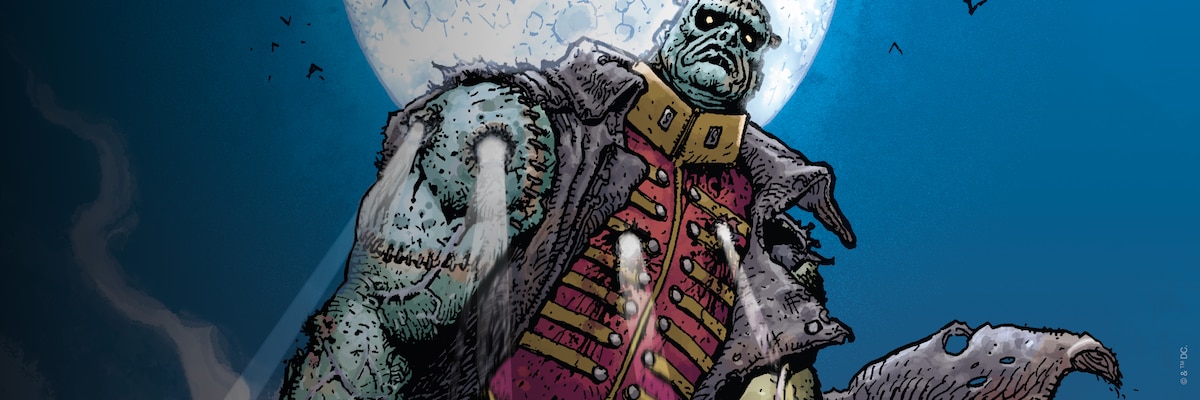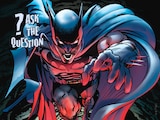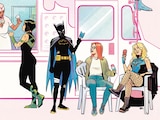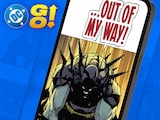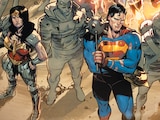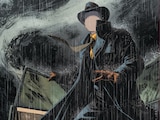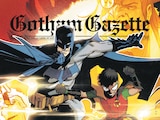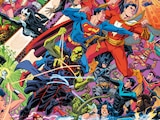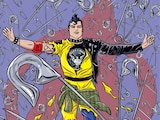DC’s characters have always been archetypes. Whether paragons of truth, hope and justice, or the embodiments of greed, hubris and madness. So it makes sense that the creature of Mary Shelley’s 1818 novel Frankenstein—the tale of a scientist who seeks to create life from death and winds up rejecting his creation—would fit right at home in the DC Universe. For what is the Frankenstein monster if not the archetypal personification of everyone’s yearning for belonging, acceptance and human connection…and the tragic fate that befalls those who go without such necessities?
Shelley’s story first found its way into the DCU in May 1948’s Detective Comics #135. “The True Story of Frankenstein” is written by Edmond Hamilton and penciled by Batman creator Bob Kane. Here the “monster” is merely a human named Ivan, an assistant to Baron Frankenstein who suffers a lab accident and is saved by an adrenaline injection. Unfortunately, this leaves him in a mindless state in which he’s easily manipulated by the Baron’s cousin, Count Mettern, and ordered to destroy the Baron. The tale concludes with Batman (who’s traveled back in time to 19th century Europe with Robin) telling this “true story” to a reporter, who’s later revealed to be Mary Shelley, who then turns it into her famous novel. Of course, none of this makes any kind of sense from a historical, scientific or literary perspective.
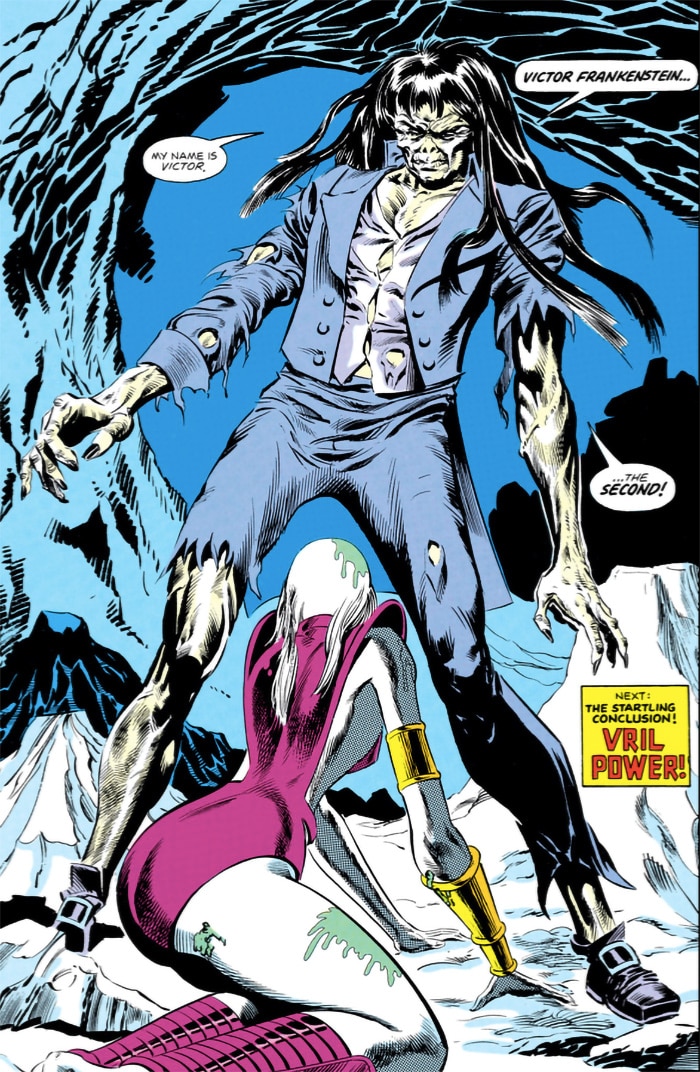
Thankfully, a different take was offered in February 1973’s The Phantom Stranger #23, in a back-up story written by Marv Wolfman and illustrated by Mike Kaluta. A continuation of Shelley’s novel, this finds the creature—now known as “The Spawn of Frankenstein”—resurrected in the present day and again misunderstood and hunted by humans. This version of the creature made a string of comic appearances throughout the ’70s and ’80s ending with The Young All-Stars #18 and #19, written by Roy and Danette Thomas and penciled by Ron Harris, in which he’s exiled in an ice cave in the Arctic and names himself Victor Frankenstein II.
A third version of the character made just a single appearance in February 1980’s Superman #344 (“The Monsters Among Us!”), written by Paul Levitz and Len Wein and penciled by Curt Swan. This time, he was presented—alongside fellow horror stalwart Dracula—as a figure from what the Phantom Stranger calls the “World of Nightmare.”
By far DC’s most successful incarnation of the creature was introduced in the 2006 limited series Seven Soldiers: Frankenstein, written by Grant Morrison and illustrated by Doug Mahnke. A part of Morrison’s Seven Soldiers of Victory crossover event, this title saw the creature—now simply known as Frankenstein—as a sword-slinging, heroic figure, recruited as an agent of S.H.A.D.E. (Super-Human Advanced Defense Executive) by his “Bride” (making her first DC appearance). Inspired by the character introduced in the 1935 film Bride of Frankenstein, she tells him she prefers a living partner.
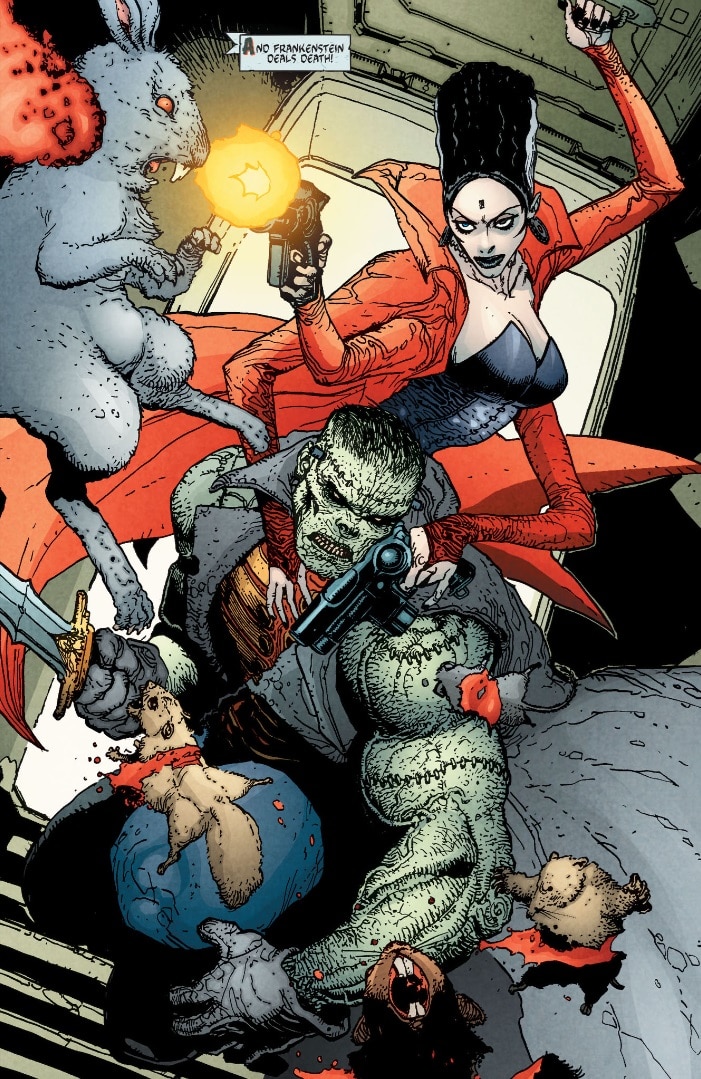
In the years that followed, Frankenstein rose through the ranks of S.H.A.D.E. to become a senior field agent, appearing in events like Final Crisis, where he joined his fellow heroes in battling Darkseid (whose Anti-Life Equation had no effect on him since he’s already dead). In Superman/Batman #67, a part of Blackest Night, he battled the also undead Solomon Grundy in one of the event’s most savage smackdowns.
When DC rebooted its universe in 2011’s New 52, Frankenstein received his first ongoing DC series, Frankenstein, Agent of S.H.A.D.E., written by Jeff Lemire and penciled by Alberto Ponticelli. In this reality, it was revealed that the monster and his Bride once had a son. Unfortunately, their child mutated into a true monster, placing Frankenstein in the same position his own creator once occupied. In Frankenstein, Agent of S.H.A.D.E. #8, the two parents confront their offspring for the final time in a tragic battle, after which the Bride resigns from S.H.A.D.E. and becomes a private bounty hunter. During this period, the monster also joins DC’s team of supernatural adventurers, Justice League Dark.
After DC’s Rebirth era began in 2016, Frankenstein and the Bride teamed up with the Man of Steel in Superman #12. Then, after the criminal organization Leviathan dismantled S.H.A.D.E., Frankenstein again went solo, before creating his own team in the 2019 limited series Gotham City Monsters, written by Steve Orlando and illustrated by Amancay Nahuelpan.
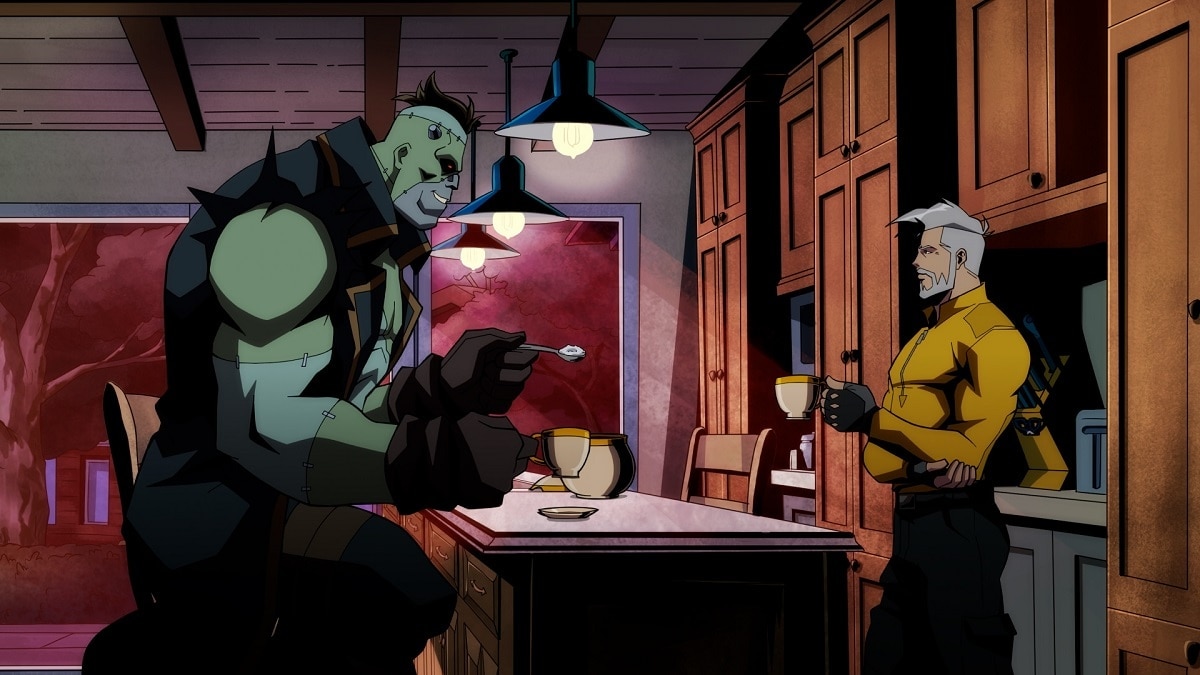
DC’s Frankenstein made video game appearances in LEGO Batman 3: Beyond Gotham and LEGO DC Super-Villains. But his greatest role outside of comics is undoubtedly in James Gunn’s 2024’s HBO Max adult animated series Creature Commandos. Based on the comic book team of the same name (which featured a Frankenstein-like character in the stitched-together Pvt. Elliot Taylor), the show depicts Frankenstein as even more closely resembling the creature of Mary Shelley: an erudite, overgrown, rejected child prone to deadly emotional outbursts. Named “Eric” and voiced magnificently by David Harbour, this Frankenstein murders his creator when he learns he’s having an affair with his would-be Bride. He then chases the Bride across the world and across the centuries, following her to present-day Pokolistan, where she undertakes a mission for A.R.G.U.S. and forms Task Force M.
Enduring enough sorrow to fuel a dozen comic characters’ origin stories, Frankenstein, like all the heroes of the DC Universe, rises time and again, ever yearning to fill his cold undead heart with the warmth of human kindness.
Joseph McCabe writes about comics, film and superhero history for DC.com. Follow him on Instagram at @joe_mccabe_editor.
NOTE: The views and opinions expressed in this feature are solely those of Joseph McCabe and do not necessarily reflect those of DC or Warner Bros. Discovery, nor should they be read as confirmation or denial of future DC plans.
